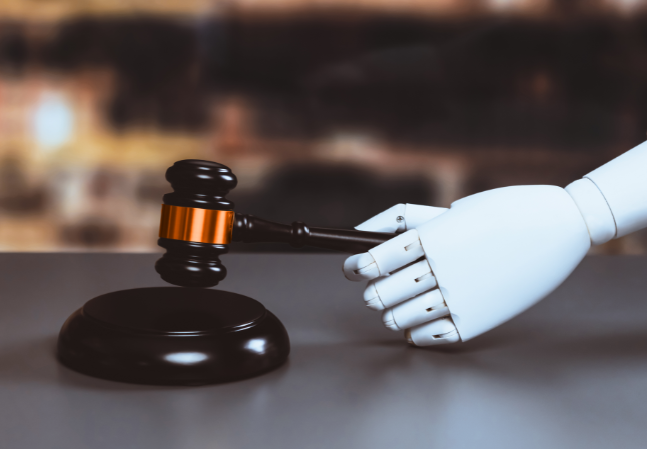Welcome! Save 30% on all CLE, CPE, and Professional Skills webinars, plus 15% off any annual pass with code HOLIDAY25
About the Course
Introduction
This CLE webinar will guide patent counsel on obviousness issues and the implications of the Federal Circuit's recent decisions. The panel will discuss the obviousness analysis and offer best practices for a patent owner to present claims to assist in navigating obviousness and for a generic manufacturer to surf the waves of Section 271(e)(4)(A).
Description
Hamlet famously said: "The play's the thing." Hamlet, act-2, scene-2. Two much-ballyhooed recent Federal Circuit decisions make clear that in U.S. patent law, "The claim's the thing." The teachers for this course, Joanna T. Brougher, MPH, BioPharma Law Group, Dr. Brit Perla of Arcus Biosciences, Michelle O’Brien, Head of Life Sciences at the Marbury Law Group, and Tom Irving, Senior Partner of the Marbury Law Group, bring, combined, over 80 years of U.S. patent experience that corroborates that "The claim's the thing."
A recent decision by the Federal Circuit Court of Appeal in Salix Pharm. v. Norwich Pharm. (Apr. 11, 2024) demonstrated the complexity of cases addressing Orange Book patents and Hatch-Waxman litigation. Of course, every decision depends on its own facts and circumstances. But, this decision surprisingly invalidated Salix's Orange Book listed polymorph patents, while upholding other Orange Book listed patents. This demonstrates the importance of a pharma patentee obtaining and legitimately listing in the Orange Book as many U.S. patents as possible. After all, last year's Lundbeck v. Lupin Federal Circuit decision, Nos. 2022-1194, 2022-1208, and 2022-1246 (Dec. 7, 2023), hammered home once again that a patentee only has to prove infringement of one claim of one patent, even if ALL Orange Book listed patents are invalidated.
The decision presents a few potential issues that bear investigation and extrapolation. For example, can routine experimentation replace demonstration of a reasonable expectation of success in assessing obviousness under 35 U.S.C. § 103? Furthermore, are drugmakers who include clinical trial protocols in a patent specification walking into a trap of a court relying on those protocols when obviousness is being questioned? And, even if not disclosed, would the duty of candor require disclosure of such protocols to the USPTO? A further example from this decision is what may be the impact of a generic manufacturer's skinny labeling strategy stemming from the court's interpretation of Section 271(e)(4)(A). And an overarching theme for a patent owner is how to draft and obtain pharma claims that will dovetail with available evidence to establish non-obviousness.
In a second recent decision, Janssen Pharm. v. Teva Pharm (Apr. 1, 2024) the Federal Circuit breathed life into a generic manufacturer's claims challenging a schizophrenia drug, by finding the district court was "erroneously rigid" in its 35 U.S.C. § 103 analysis. As Yogi Berra would have said, doesn't this analysis constitute déjà vu all over again in light of the Supreme Court's KSR decision? What differences exist, if any, between Janssen and KSR?
This description merely scratches the surface of what the panel will have to say. Listen as our authoritative panel of patent professionals examines obviousness and the implications of the Federal Circuit's recent decisions. The panel will discuss the obviousness analyses of the two decisions and offer best practices for a patent owner to present claims to assist in navigating the shoals of obviousness and for a generic manufacturer to surf the waves of Section 271(e)(4)(A).
Presented By

Ms. Brougher is a patent attorney who focuses on all aspects of services related to patents in the areas of biotechnology, pharmaceuticals and medical devices, including patentability opinions, due diligence, patent drafting, domestic and foreign patent prosecution, development and management of patent portfolios, and general client counseling during all phases of a product’s lifecycle, from concept to commercialization.
Her patent experience covers a variety of complex and innovative inventions involving small molecule drugs, biologics, cell-based technologies, compositions, drug formulations and drug delivery systems, immunotherapeutics, medical devices, diagnostic tests, nanotechnology, and immunology, particularly vaccines and antibodies. Ms. Brougher also has experience counseling clients on the Hatch-Waxman Act and is monitoring developments involving biosimilars under the Biologics Price Competition and Innovation Act.

Mr. Irving has 47 years of experience in the field of IP law. His practice includes due diligence, patent prosecution, reissue and reexamination, patent interferences, and counseling, including prelitigation, Orange Book listings of patents covering FDA-approved drugs, and infringement and validity analysis in the chemical fields, as well as litigation. He has served as lead counsel in many patent interferences.

Dr. Perla is a Senior Patent Agent at Arcus Biosciences, a clinical-stage, global biopharmaceutical company with the goal of developing best-in-class molecules and combination therapies for people with cancer. At Arcus, Dr. Perla supports small molecule discovery and clinical stage programs. Prior to joining Arcus Biosciences, she was a Patent Agent at Haley Guiliano LLP where she supported pharmaceutical and consumer product-based companies. She earned her Ph.D. in Chemistry from the University of Notre Dame.
-
This 90-minute webinar is eligible in most states for 1.5 CLE credits.
-
Live Online
On Demand
Date + Time
- event
Monday, June 10, 2024
- schedule
1:00 p.m. ET./10:00 a.m. PT
- Salix Pharm. v. Norwich Pharm. (Fed. Cir. Apr. 11, 2024)
- Janssen Pharm. v. Teva Pharm. (Fed. Cir. Apr. 1, 2024)
- Obviousness analysis
- Section 271(e)(4)(A)
- Best practices, particularly in drafting and obtaining U.S. pharm patent claims that should be enforceable
The panel will review these and other important issues:
- How have recent Federal Circuit decisions impacted the application of the obviousness standard?
- What impact will the interpretation of Section 271(e)(4)(A) have on generics?
- What strategies should patentees and petitioners employ to prevail on obviousness assertions at the Federal Circuit?
Unlimited access to premium CLE courses:
- Annual access
- Available live and on-demand
- Best for attorneys and legal professionals
Unlimited access to premium CPE courses.:
- Annual access
- Available live and on-demand
- Best for CPAs and tax professionals
Unlimited access to premium CLE, CPE, Professional Skills and Practice-Ready courses.:
- Annual access
- Available live and on-demand
- Best for legal, accounting, and tax professionals
Unlimited access to Professional Skills and Practice-Ready courses:
- Annual access
- Available on-demand
- Best for new attorneys
Related Courses

Patent Validity and Entresto: Lessons From the Ongoing Dispute
Tuesday, January 13, 2026
1:00 p.m. ET./10:00 a.m. PT

Evaluating and Acquiring Patent Portfolios: Key Considerations
Thursday, February 19, 2026
1:00 p.m. ET./10:00 a.m. PT



